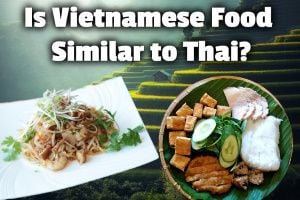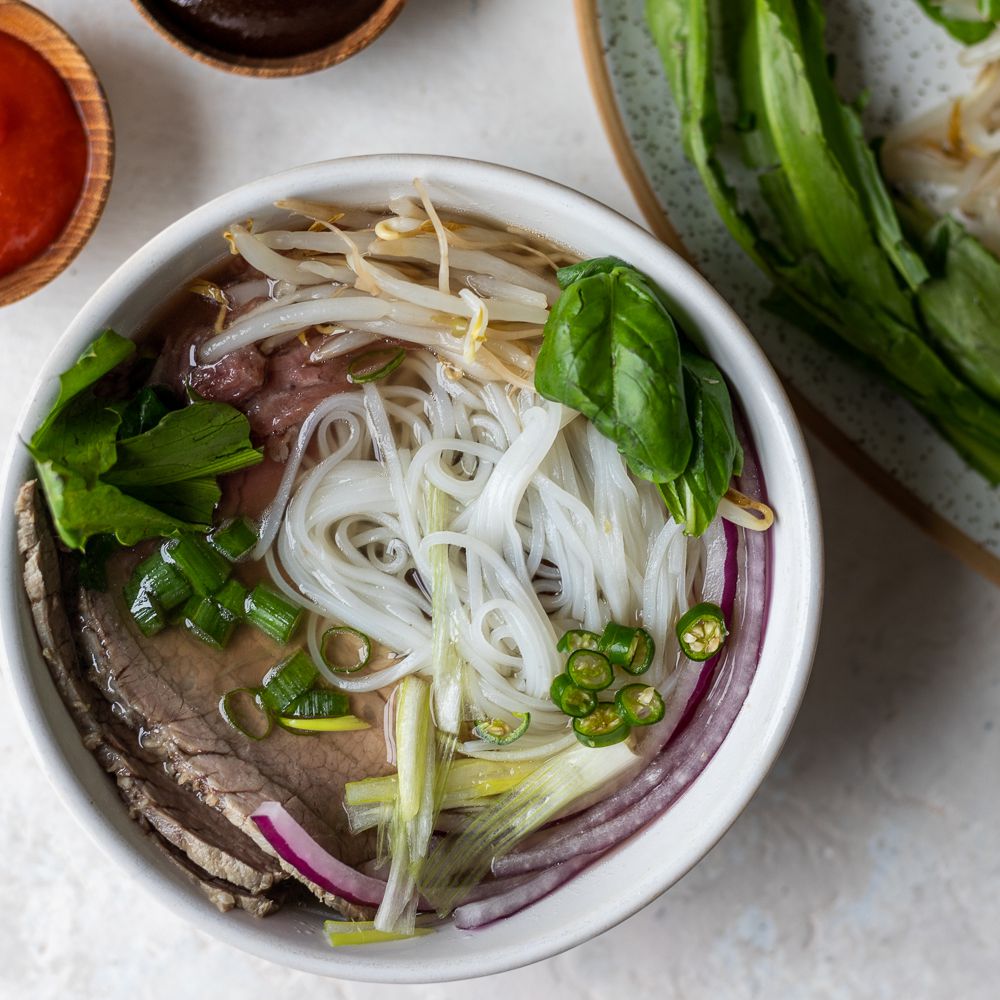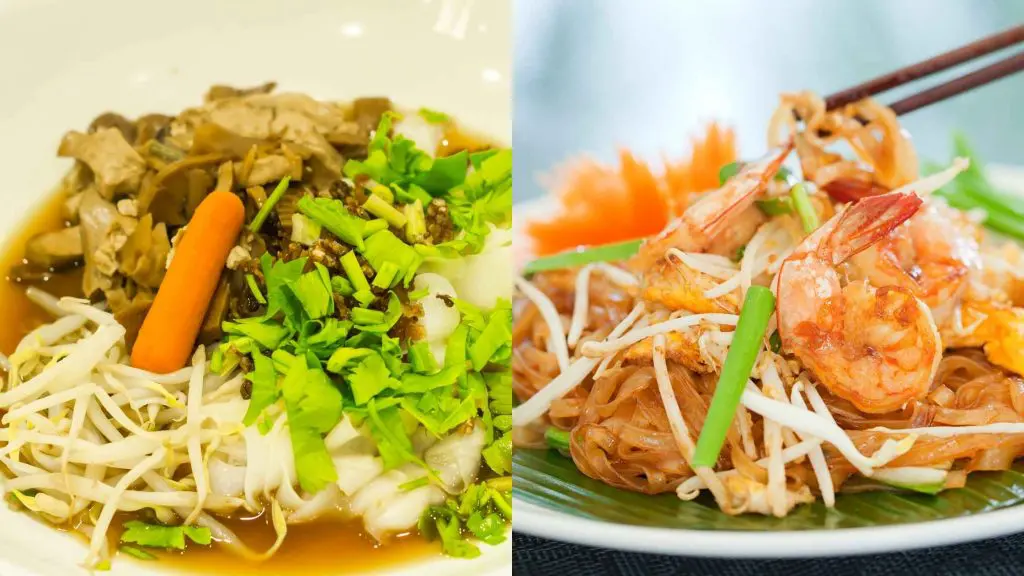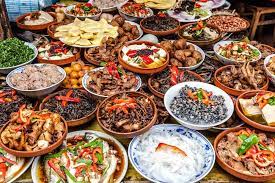Thai vs Chinese vs Vietnamese Food: Similarities and Differences!

While Vietnamese and Thai cuisines have certain similarities, there are numerous noteworthy variances, with Thai cuisine incorporating coconut milk sauces and hot curry pastes and Vietnamese cuisine remaining considerably lighter.
All forms of Asian food (the most well-known being Thai, Korean, Chinese, Japanese, and Vietnamese) share some components and flavors, such as:
- As a basis, use rice or noodles.
- There isn’t much dairy.
- Fresh Ginger
- Chipotle sauce
However, in terms of flavor, Thai and Vietnamese cuisines are not the same. Vietnamese cuisine is often significantly less spicy than Thai cuisine.
Thai cuisine is known for using a lot of fiery chili peppers. Hot peppers are only found on rare occasions in Vietnamese cuisine.
Fresh, raw vegetables are common in Vietnamese cuisine, but stir-fried vegetables are common in Thai cuisine.
Vietnamese cuisine is regarded as one of the healthiest globally, whereas Thai cuisine is regarded as the spiciest.
How did French food influence Vietnam?
With the advent of baguettes and the French custom of preparing rich handmade stocks used in pho, the entry of French culture, especially French cuisine, irrevocably transformed the face of Vietnamese food.
Indeed, when considering the French occupation of Vietnam, the significant contrasts between Vietnamese and Thai cuisines become apparent.
Relations between France and Vietnam began in the 17th century.
Catholic missionaries from France visited Vietnam at the time. In 1887, the French colonized both Vietnam and Cambodia.
France did not depart Vietnam until 1954, following the Geneva Accord, but they left an indelible mark on Vietnamese cuisine, being responsible for the introduction of the following ingredients:
- Asparagus
- Potatoes
- Baguettes are breadsticks (as seen in the delicious banh mi sandwich)
Is Pho Vietnamese or Thai?

Pho is a noodle soup from Vietnam. It generally includes some form of protein, such as chicken, steak, pig, or shrimp. It’s pronounced “fuh.”
Thin rice noodles and a broth made of beef stock and various spices are used in traditional pho.
There are several pho varieties, the most prevalent being the pho name, which originated in Southern Vietnam. The original pho is supposed to be pho bac from Northern Vietnam.
Pho is considered the national dish of Vietnam.
Though the origins of pho are unknown, it is usually assumed that it began in the late 1880s, during the French occupation of Vietnam.
Even the term “pho” is supposed to be derived from the French “feu.”
It suggests that pho is a derivative of the French soup “pot au feu,” a French beef stew.
Over time, the Vietnamese adapted the soup by substituting bean sprouts, herbs, and lime juice for the carrots and turnips in the stew.
Is Thai food spicier than Vietnamese food?

Thai cuisine is substantially hotter than Vietnamese cuisine, and it frequently includes both curry paste produced from ground chili peppers and fresh sliced chili peppers.
Vietnamese cuisine is rich in fresh vegetables and herbs, but Thai cuisine is rich in chile pepper.
The hottest meal in Thailand originates from Isan, a province west of the Mekong River. There are several kinds of somtum - a green papaya salad, available here.
Salted egg, dried shrimp, peanuts, and Thai bird chilies are used to make this dish. These chilies are often available as bar snacks with sour sausage and dry pork.
Hot peppers are not commonly used in Vietnamese cuisine. However, they may be used as a garnish or topping, and Thai cuisine frequently includes spicy peppers in its components.
If you prefer the freshness of Vietnamese food but crave the spice of Thai, you may always add hot sauce to the table.
But nothing beats preparing your curry from the widely available Thai curry paste.
What is the difference between Chinese food, Thai food, and Vietnamese food?

Thai cuisine is more akin to Vietnamese cuisine than Chinese cuisine. Chinese food is the heaviest overall, with more fried meals and sugary sauces, and MSG is used considerably more extensively in Chinese cooking than in Thai or Vietnamese food.
Thai food, like Vietnamese food, frequently uses rice noodles as a basis. However, rice is also used in Chinese food.
It could make more sense if you look at the region as a whole. China (as well as Japan and Korea) are to the east. In comparison, Vietnam and Thailand are both in the southeast.
Thai cuisine is substantially spicier than Vietnamese food and usually includes stir-fried veggies. Vegetables in Vietnamese cuisine are often uncooked.
The most noticeable distinction is found in Thai curries.
Thai curry makes a thick, spicy sauce with a curry paste combined into a foundation of coconut milk. They sell a variety of curry pastes, including:
- Green curry sauce
- Red curry sauce
- Yellow curry sauce
- Curry with Panang fruit
Each curry paste is unique, although they always contain chiles and garlic, with the possibility of lemongrass (also common in Vietnamese cuisine) and shrimp paste.
China and Japan favor ginger, while Vietnam and Thailand choose fresh herbs such as lemongrass, kaffir lime leaves, mint, cilantro, basil, and galangal (a root similar to ginger).
In certain aspects, however, it is difficult to generalize and compare because all Asian nations have various areas and (in some cases) significantly varied cuisines within those regions.
As perplexed as I used to be about the distinctions between Thai and Indian curry, there is a vast difference between them.
If so, you should read this essay I created that explains the important distinctions.
What struck me the most was how the curry plant’s leaves are utilized in Indian cuisine but not Thai.
Did I address all of your questions regarding how Vietnamese cuisine compares to Thai food?
This article delves into the realm of Asian foods.
We looked at ingredients, cultural parallels, and variances and tasted things like spiciness. Thai food is typically produced with fiery peppers, but Vietnamese food is made with fresh, light, and mild ingredients.
Curry is likewise far more prevalent in Thailand than in Vietnam.
Coconut milk will be used in many curry dishes. You might be tempted to buy canned coconut milk.
Finally, we spoke about how the French invasion influenced the cuisines of Vietnam. The French contributed baguettes and pho, which would later become Vietnam’s national dish.











